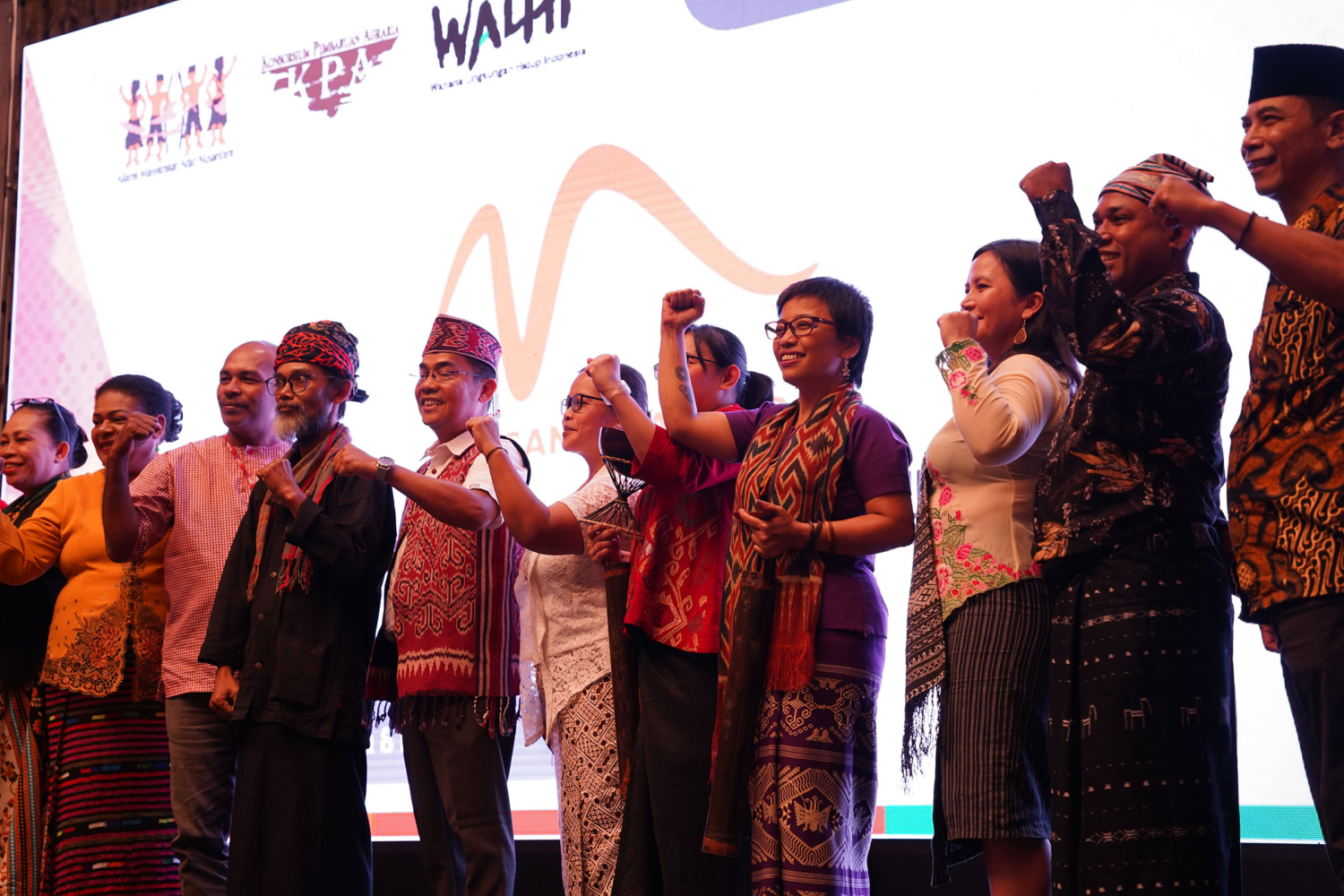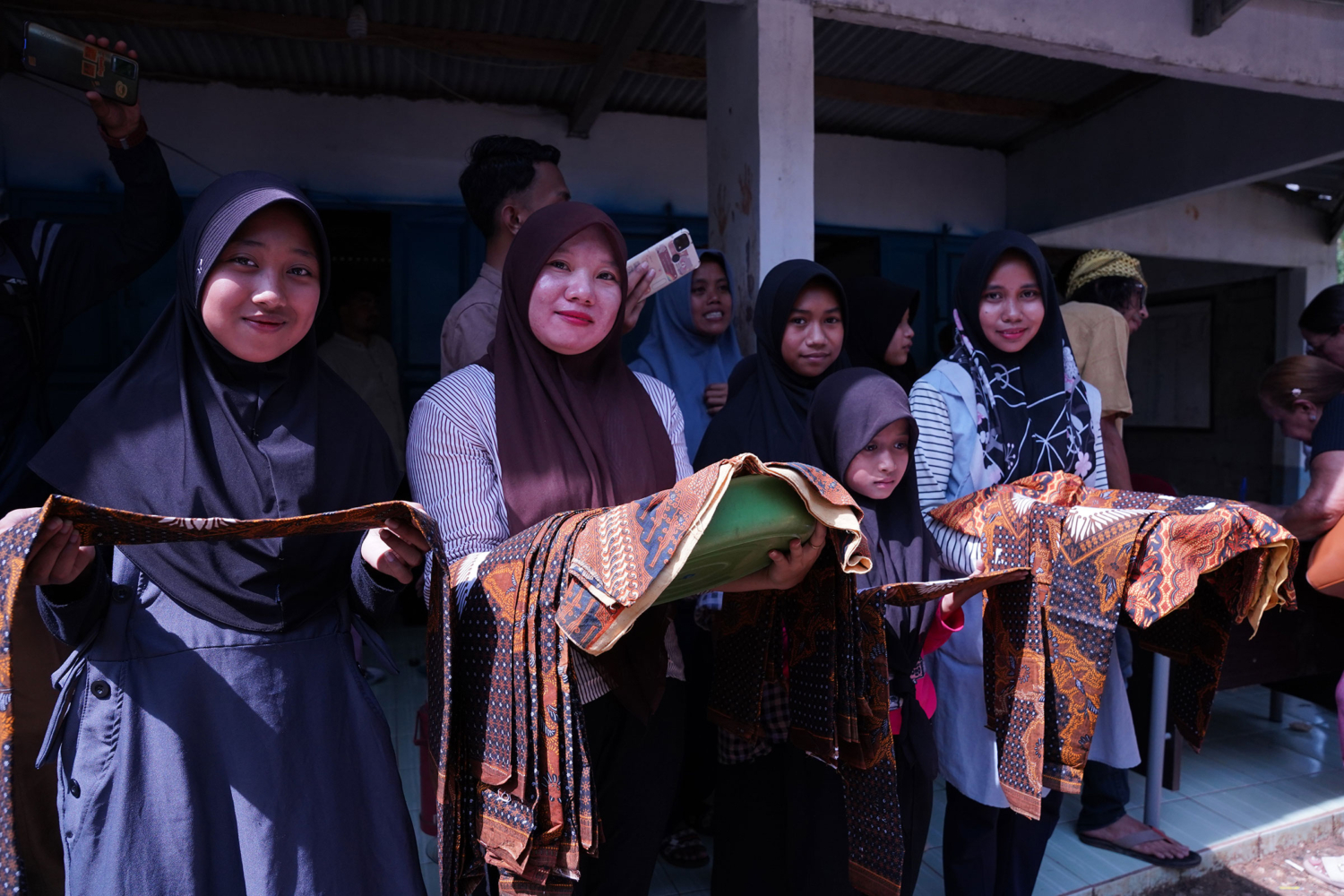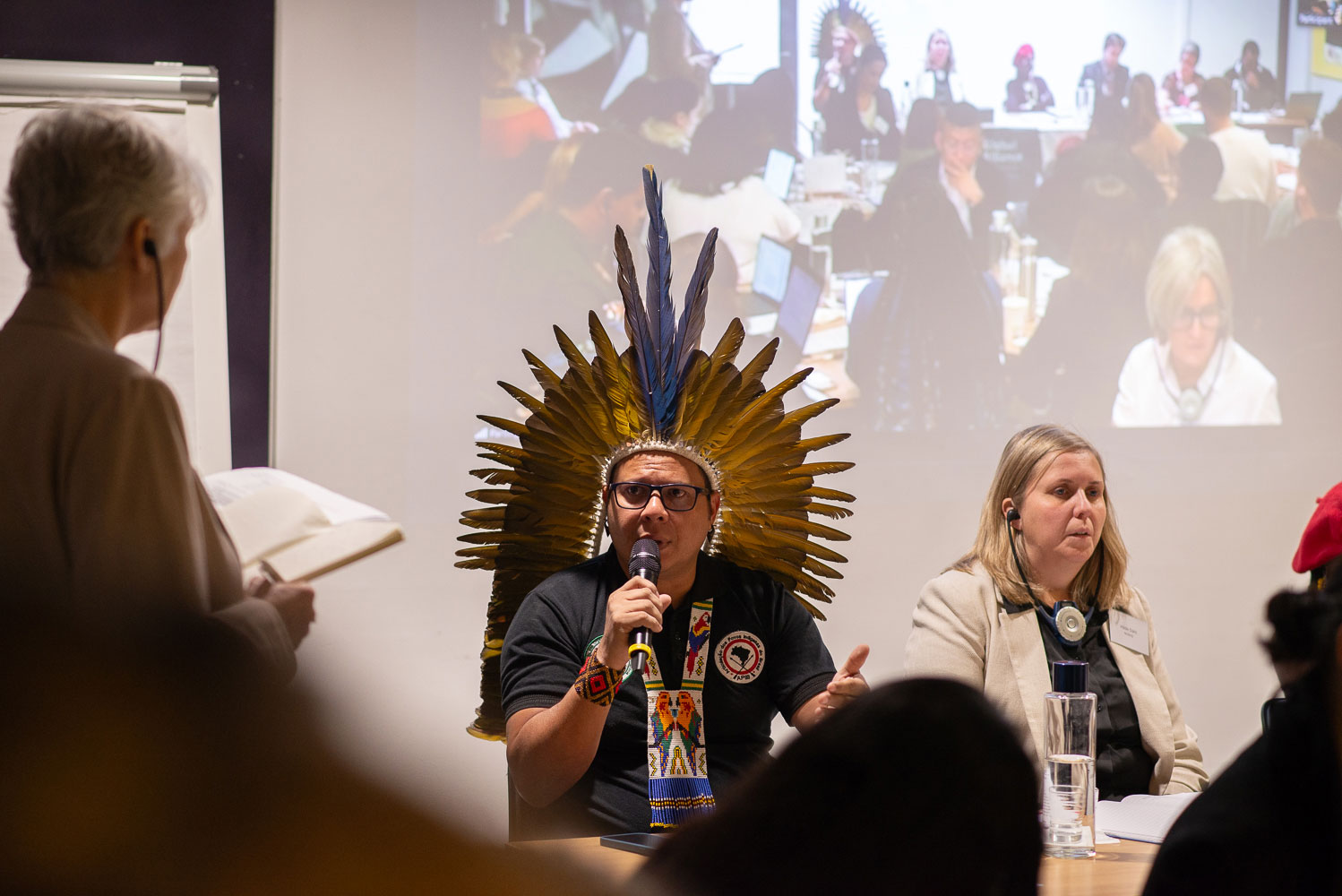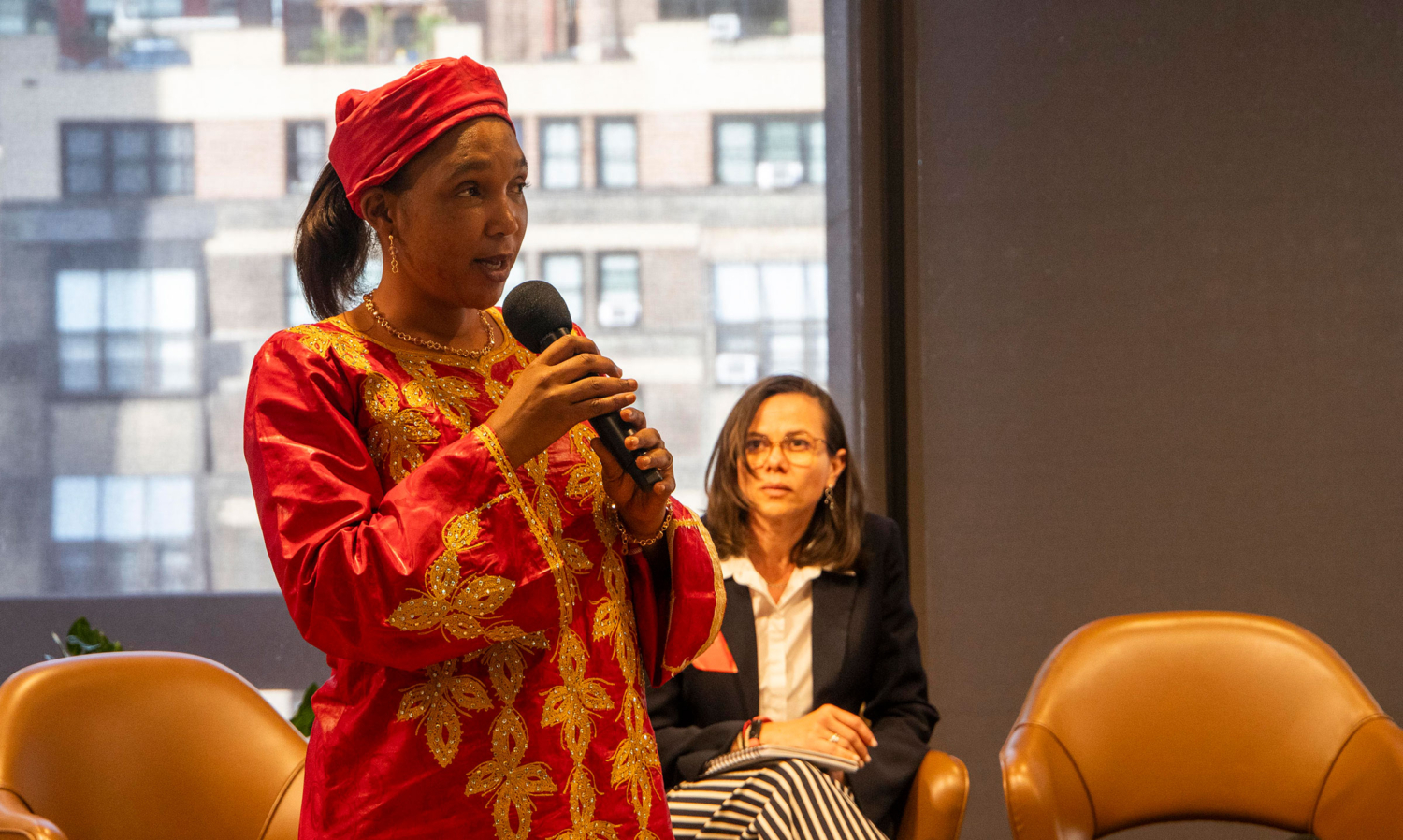Donors Struggling to Deliver Climate Funds to Indigenous Peoples
Alliance of Indigenous Peoples and Local Communities from the forests of Africa, Latin America and Asia releases a report at COP28 suggesting donors are struggling to deliver promised climate funds directly to Indigenous Peoples and local communities.
As UN negotiators debate how to invest trillions, experiences and evidence presented at Dubai event suggest funds channeled through third parties ‘evaporate’ before reaching communities shown to excel in restoring forests and preventing deforestation.
DUBAI — (3 December 2023) At the UN Climate Conference today, a global alliance of Indigenous Peoples and local communities from 24 tropical forest countries released a report identifying significant flaws in global efforts to fund communities that conserve some of the world’s most biodiverse and carbon-rich tropical forests in Africa, Asia and Latin America.
According to research released today by the Global Alliance of Territorial Communities (GATC), donors continue to use inadequate, antiquated systems for documenting and delivering development assistance, often sending money for Indigenous Peoples and local communities through third parties, limiting the amounts that reach them. For their conclusions, the authors drew on information provided by Indigenous Peoples and local communities; a review of publicly available donor data; a survey of partners and allies; and insights gathered during a workshop in Paris to discuss obstacles and solutions for tracking funds and reporting impact.
“We are committed to working with donors to build a system that can work for both of us,” said Mina Setra, an Indigenous Dayak Pompakng woman from West Kalimantan, Indonesia and the Deputy to Secretary General of AMAN (Indigenous Peoples Alliance of the Archipelago), an Indigenous organization with 2,565 member communities. “We believe that by doing so, we can scale up our contributions.”


Indigenous Peoples in Asia at the Nusantara Fund launch. Photos: TINTA
Presented today at a side event during COP28, the GATC findings are being released as UN climate negotiators prepare to hammer out an agreement worth trillions of dollars for implementing and financing “nature-based” and other solutions to address the climate crisis. An estimated 36% of the world’s remaining intact forests, at least 24% of the above-ground carbon in tropical forests and up to 80% of the world’s remaining forest biodiversity are found within Indigenous Peoples’ territories. And yet the UNFCCC’s first global stocktake stopped short of calling for funds to support the land rights of Indigenous Peoples and local communities and their proven, outsize role in conserving and restoring tropical forests.
In detailing their findings, the authors of the GATC report concluded that only a small fraction of international funding for biodiversity, climate change and sustainable development is allocated for Indigenous Peoples and local communities. Where data is available, they highlight the pervasive discrimination faced by Indigenous Peoples and local communities but also their crucial role in combating climate change and biodiversity loss and achieving sustainable development that leaves no one behind.

GATC leaders say that the intersecting crises of climate change, biodiversity loss and inequality are making it difficult for them to maintain a sustainable way of life, and to pass down their traditional knowledge, practices, and innovations to future generations. Data from the ground illustrates how little money is reaching communities. A survey among members of the GATC suggests that few local organizations in their networks operate with budgets above US$200,000, and many local organizations have an annual budget below US$10,000. Communities are asked to do big things with small money, according to the GATC report.
The double challenge of too little information about too little funding is echoed in a second report, which was released on Friday by the Forest Tenure Funders Group (FTFG), which is comprised of donor countries and philanthropic organizations that made a collective commitment at COP26 in Glasgow to deliver a total $1.7 billion in five years directly to Indigenous Peoples and local communities.
The Forest Tenure Funders Group reported that figures cited in last year’s report overestimated the amount of money delivered directly to communities; it was actually 2.9%. While the amount of funding for communities increased modestly to $8.1 million in 2022, the overall percentage of direct funds declined to 2.1%, despite the group’s commitment to increase direct support.

“The philanthropic organizations and donor governments that made the US$1.7 billion pledge in Glasgow, really want us to succeed, but the percentage communities receive under the pledge has dropped from 2.9% in the first year to 2.1% in the second year,” said Levi Sucre Romero, a Bribri leader from Costa Rica who serves on the GATC council and chairs the Mesoamerican Alliance of Peoples and Forests (AMPB). “This means we are going backwards; it is becoming more evident that it is hard for donors to trust us with the money that we need to scale up our guardianship role.”
Ford Foundation President Darren Walker, who wrote an introduction to the Forest Tenure Funders Group report, acknowledged the problem, noting that donor practices and priorities “are not changing fast enough.”
“Stated simply, funding remains insufficient, inequitable, and inflexible,” the Ford Foundation president wrote in his introduction. “In 2022, an unacceptably small volume of funding—only $8.1 million—flowed directly from pledge donors to Indigenous Peoples, local communities and Afro-descendants. I am disappointed by our slow progress on this point, and I know our Indigenous, local community, and Afro-descendant partners will be, too.”
Indigenous-Led Solutions to Correct Flawed Systems for Delivering Aid
In November, the GATC hosted a two-day workshop, drawing to Paris 65 representatives of Indigenous Peoples’ networks, local communities, national donors, philanthropic funders, UN and multilateral agencies, civil society organizations and researchers. Held under Chatham House rules, the event contributed to the report released today by the GATC.
Workshop participants agreed on the need to correct the systemic gap identified in the report and to work together to build a better tracking system, drawing on data from multiple sources, including Indigenous Peoples and local communities. Currently, reporting is based on estimates, ad hoc methodologies and surveys, which are complex and time consuming, and carry significant risks of miscalculations, misinterpretations and double counting, according to the report released today. The goal will be to develop a plan for addressing the lack of answers to basic questions including, how much money is earmarked for Indigenous Peoples and local communities, for what purpose and with what impact.


Shandia leads policy and high-level dialogue to facilitate funding to Indigenous Peoples and local communities.
In reporting on the challenges they face attracting direct funding for their communities, the GATC members said they are grateful for the partner NGOs whose mission aligns closely with theirs and who receive funds that are earmarked for supporting Indigenous Peoples and local communities.
“This is not an argument for taking funds away from our closest partners and allies,” the GATC report notes, “but points to the immediate need to scale-up funding to our organizations to create a level playing field.”
Efforts to collect data for the GATC report revealed that Indigenous Peoples and local communities often remain excluded from discussions about funding for their own territories and organizations. Global systems for reporting development aid through the organization for Economic Co-operation and Development (OECD) and the International Aid Transparency Initiative (IATI) also failed to track funding for Indigenous Peoples and local communities.
“We urgently need to turn things around, yet progress is painfully slow,” said Lord Goldsmith, who was Minister of the Foreign, Commonwealth and Development Office of the UK Government when he joined other high-profile donors in making the pledge in Glasgow. “The money often appears to evaporate in complex transactions through numerous layers of multilateral institutions, raising concerns that too little is being done to support the quest of Indigenous Peoples and local communities for their land rights as a climate solution.”

In response to the situation, leaders of organizations representing thousands of Indigenous Peoples and local communities across the globe have established funds and other mechanisms that can directly channel funding to communities.
According to the GATC report, these funds support community activities, while also helping to build technical capacity and develop indicators and priorities that suit the communities and help them measure and report on impact. “Their design is based on extensive consultations to align with communities’ own priorities and plans and to respond quickly to emergencies and changing situations on the ground,” the authors wrote.

To encourage further transparency about where funding is going, the GATC created the Shandia platform to support Indigenous- and community-led funds, to advocate for increasing direct, effective and sustainable funding, and to ensure accurate tracking of funds.
“The need for a vehicle that can help us to interact with funders continues to be a critical issue for our goal of territorial direct investment,” said Sucre Romero. “This is why we have proposed the Shandia platform and created several financing mechanisms at the national and regional level–to facilitate direct funding to our territories and communities for actions that combat climate change, conserve biodiversity and sustain our rights. Without it, we will not have the opportunity to be in the driver’s seat in designing climate solutions that work; we will not be able to influence what these donors fund and where.”

